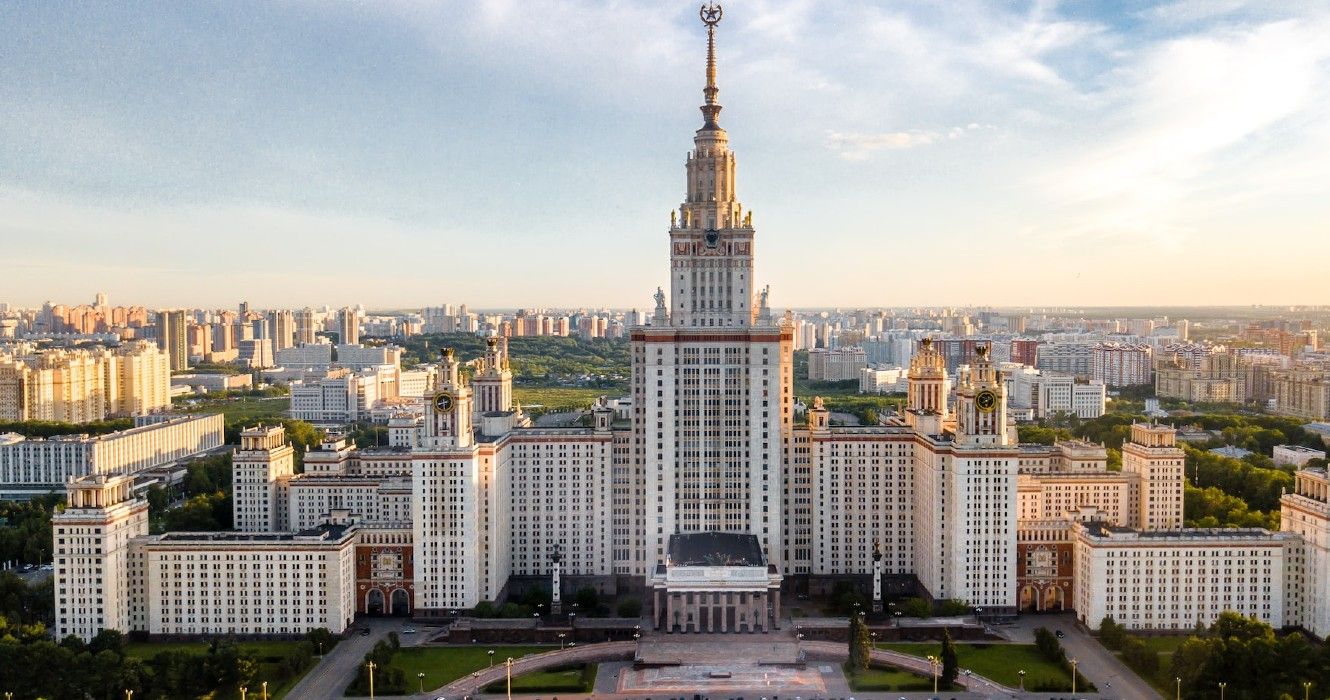Quick Links
Whether tall or short, big or small, universities have played an oversized role in the history of our planet and our place in it. Needless to say, it’s something to do with our sacred reverence for knowledge as well as our thirst for it. That’s the reason a place such as Cambridge, even if primarily a town, is known much more as a university.
Of course, many will not pass the chance to see Trinity College, Cambridge—if only to view a place where Isaac Newton sat as a student. And because of their fame and popularity, several universities in the United States have become unique vacation destinations. Sometimes, such as is the case with the UNESCO-Listed University of Virginia, it’s all about their architectural style and value. Here’s an intriguing story about the Main Building of Moscow State University, the tallest educational facility in the world.
What To Know About The Main Building Of Moscow State University
For starters, the Main Building of Moscow State University is the tallest of any university or academic institution in the world. Such a tag alone should place it among the must-dos in Moscow, of course, besides the Kremlin, the famous symbol of Russia’s power and authority.
Stretching to a neck-straining 787 feet, or about 240 meters, the Main Building of Moscow State University is one of the structures that define Moscow’s skyline. Actually, it was the tallest building in Europe until 1988 (at the completion of MesseTurm in Frankfurt)—as well as the tallest in Moscow up to 2003—at the completion of Triumph Palace.
Yet, while its height is one of its most acclaimed features, much of it is because of its spire and not the concrete itself.
For perspective, without its iconic spire, the main building of Moscow State University would only be 82 meters tall. Yet it’s not just the height.
Moscow State University is the most prestigious in the whole of Russia and, according to some accounts, the oldest as well. At its completion, and as a mark of its size, this building could accommodate all the university students in its 6,000 rooms.
And though individual spaces were relatively small, student rooms had beds, desks, and bookcases. Among a group of seven iconic skyscrapers in Moscow known today as the Seven Sisters, the main building of the university was the tallest.
Here’s The Fascinating History Of The Main Building Of Moscow State University
Around the time the U.S. government was proposing a Marshall Plan to help lift countries devastated by the Second World War, the Science Department of the Central Committee received a special request from the Kremlin. It was to evaluate the need for a new building for the university.
The Science Department would go on to propose the construction of a skyscraper that would be a “temple to Soviet science.” The Kremlin would soon dismiss the idea as “unrealistic.”
Joseph Stalin, the Russian leader famed for transforming the country albeit at an unbelievable human cost, would soon get involved. At the close of the Second World War, Moscow lay in ruins. In the mind of Stalin, the then 800-year-old city didn’t have the grandeur fit for its status.
More importantly, Stalin thought the ruinous state of Moscow would dent the image of Communism. “They go to America, and they say 'Ah,' Stalin is reported to have remarked. "Let them come to Moscow and see that type of building. Let them say, ‘Ah!’
And with that, the project received the green light. It would be designed and constructed by a group of architects led by Lev Rudnev, a leading practitioner of Stalinist architecture.
How The Main Building Of Moscow State University Was Constructed (& How To See It Today)
According to various reliable accounts, Moscow State University’s Main Building was constructed with labor from German prisoners of war. According to the initial plans, the building’s top would feature a big statue of an upward-looking man with outstretched hands—a symbol that symbolizes the desire for knowledge.
However, Stalin reportedly insisted on the use of a spire so that Moscow’s Seven Sisters would look similar, even if not identical. The construction of the building would come to a celebrated end in 1953 in a whirlpool of fascinating legends and myths.
One of which is that the building has a maze of underground study centers as well as a direct tunnel to Stalin’s country house.
- How Far Is University Of Moscow From Kremlin? 9.5 kilometers.
Unfortunately, it’s not possible to see the tallest university building in the world as access is restricted. Still, working in its scenic environment and looking at it at close range is a pretty fine way of touring the largest cities on the European continent.
But for those who can get in, perhaps as prospective students, the views are to die for.

